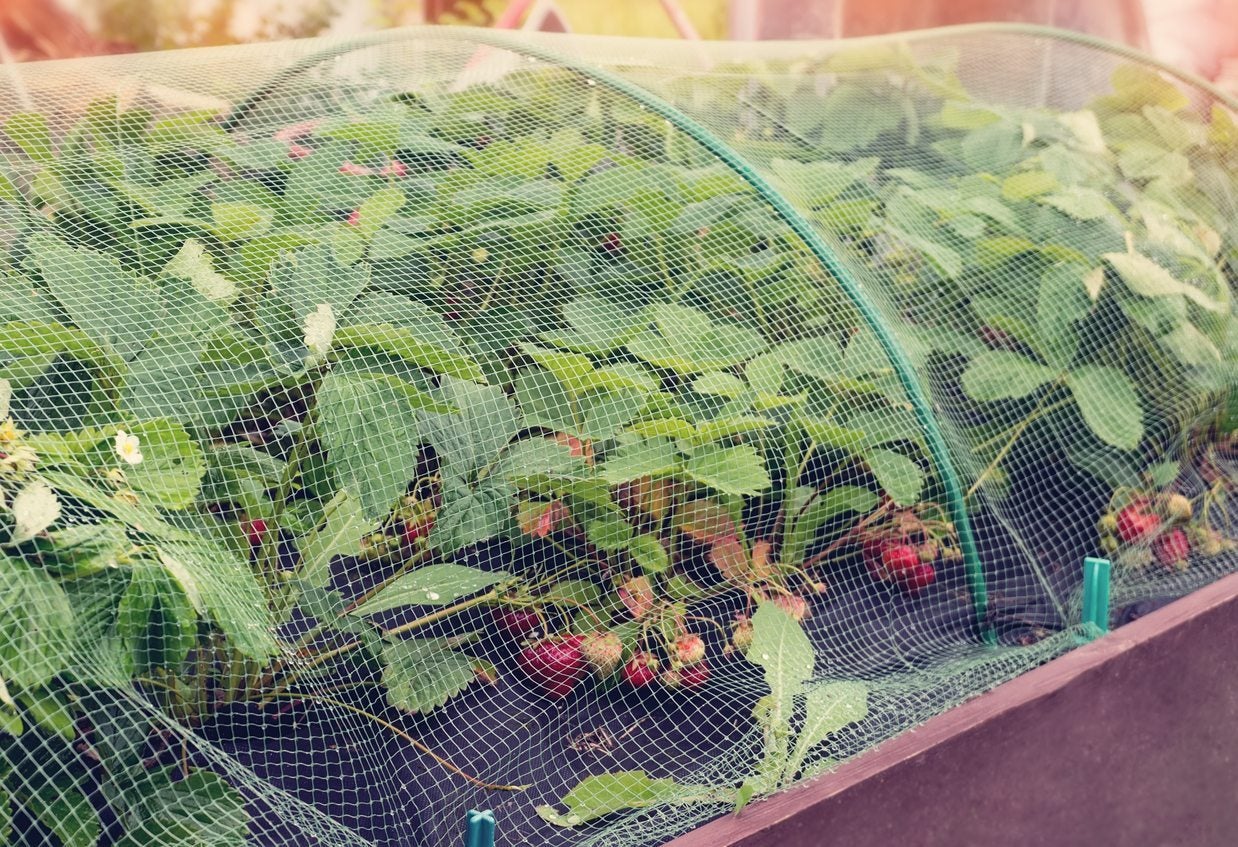What Is A Fruit Cage: Fruit Cage Uses And Benefits

For many gardeners, the biggest issue in the garden isn’t growing healthy produce, but rather retaining the produce for their own use rather than for every bird, mammal, and pest. This is especially true of soft fruit such as raspberries, strawberries, and currants. Protecting these fruit from unwanted grazing then becomes a priority, often by making a fruit cage. What’s a fruit cage? Keep reading to find out how to make a fruit cage and about fruit cage uses in the garden.
What is a Fruit Cage?
A cage is generally something to contain an animal or bird so that they cannot escape. In this case, a fruit cage is designed to keep the birds and animals out, away from those succulent berries you had planned on using. A fruit cage can be a very simple structure just for protecting the fruit or quite grandiose. Some gardens are designed with ornate fruit cages as a focal point. In this case, the fruit cage use is designed to not only be functional but artistically pleasing as well. They may be made out of wrought iron or seasoned oak complete with peaked roofs, carved finials, and decorative flashing. Not everyone can afford these ornamental edifices for their garden, but that’s okay because making a fruit cage doesn’t have to break the bank. There are several DIY versions that require very little skill to assemble. And a fruit cage doesn’t just have to be used to protect fruit. Fruit cage uses extend beyond fruit to protecting vegetables that are prone to pest attack. They are great for protecting cabbage from egg laying butterflies and for saving tender seedlings and lettuces from birds, bunnies, and other critters.
How to Make a Fruit Cage
There are many fruit cage options that can be purchased and most of them don’t require much skill to assemble, but they will cost you. If you prefer to be handy over spending money, you can assemble your own fruit cage with poles and netting. Before you assemble the fruit cage, prepare the area first. Clear the area of any weeds and amend the soil with lots of manure or other organic matter prior to planting. Laying some weed barrier fabric prior to planting is optional but will save weeding time down the road, and you can plant directly through it. Also, if you are using the fruit cage for plants that require staking, be sure to include the necessary supporting wires. Your fruit cage can be any size as long as it covers all the plants. It can even be made tall enough to walk into, especially handy for harvesting. Be sure to sink the supporting poles at least 18 inches (45.5 cm.) into the soil so the structure is stable. You can use almost any material as poles, but keep in mind that some material will degrade after a short time. Material such as treated timber or, better yet, galvanized steel will stand the test of time, but is also more costly. As to the netting size, the mesh should be no larger than an inch (2.5 cm.). Any bigger and moths and butterflies or even small birds can get through. Be sure to check the netting on a regular basis. Any small tears or holes are enough to allow a marauding horde of pests’ entry. The netting needs to be reasonably taut. Attach it so it can be removed easily if needed to allow for pollination or prior to heavy, winter snow.
Sign up for the Gardening Know How newsletter today and receive a free copy of our e-book "How to Grow Delicious Tomatoes".

Amy Grant has been gardening for 30 years and writing for 15. A professional chef and caterer, Amy's area of expertise is culinary gardening.
